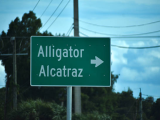The World Health Organization's (WHO's) flu vaccine advisory group met this week to recommend strains to include the Northern Hemisphere's 2019-20 vaccines and recommended changing the 2009 H1N1 component but decided to wait a month before settling on the H3N2 strain.
In a related development, the group reviewed recent zoonotic flu developments and recommended two new candidate vaccines against potential pandemic threats—H5N6 and H7N4 avian flu.
Experts take more time on H3N2
The new 2009 H1N1 component is A/Brisbane/02/2018, replacing A/Michigan/45/2015, which has been a component of Northern Hemisphere flu vaccines since the 2017-18 season and is included in the Southern Hemisphere's 2019 vaccine.
Though 2009 H1N1 has been the predominant virus in many countries, H3N2 continues to circulate and is even the main strain in some parts of the world, such as Africa and some countries in Europe and Asia.
Analysis shows that the hemagglutinin (HA) genes of 2009 H1N1 subclade 6B.1A viruses are becoming more diverse with the emergence of several subgroups, with viruses containing the HA1 S183P substitution—such as A/Brisbane/02/2018—predominating globally. Though ferret sera tests suggested that circulating strains were antigenically similar to current H1N1 vaccine viruses, human serology testing suggested a protection gap.
Regarding H3N2, the experts reviewed recent samples and results of lab tests to gauge how well current vaccine strains protect against them. They postponed their recommendation on that strain owing to rising numbers of genetically and antigenically diverse viruses. Most of the H3N2 samples collected since September 2018 belong to subclade 3C.2a1b, but, since November, the number of clade 3C.3a viruses has increased sharply in several geographic regions.
The group wrote that the cell-culture–made H3N2 vaccine component of Northern Hemisphere vaccines this season seems to protect against most recent viruses, but tests show less protection from egg-based H3N2 vaccine components from both the Northern Hemisphere's current vaccine and the upcoming Southern Hemisphere vaccine.
In September when the group made its recommendations for Southern Hemisphere 2019 flu vaccines, it updated the H3N2 component from the one it had recommended earlier in the year for the Northern Hemisphere 2018-19 flu season.
The WHO recommends the following for the Northern Hemisphere's quadrivalent (four-strain) vaccines:
- For H1N1, an A/Brisbane/02/2018-like virus
- For H3N2, to be announced on Mar 21
- For B Victoria, a B/Colorado/06/2017-like virus
- For B Yamagata, a B/Phuket/3073/2013-like virus
For trivalent versions that contain only one influenza B strain, the WHO recommends the Victoria lineage strain, the same as this season.
Pair of new pandemic candidate viruses
In their review of the most recent zoonotic flu virus activity and genetic analysis of recent samples, the group suggested a new candidate vaccine virus against H5N6, which has been found in poultry in a handful of Asian countries but so far has been linked to only 23 human infections in China.
The H5 clade of the virus that has been implicated in two of the three most recent human H5N6 infections has a hemagglutinin that doesn't match current candidate vaccine viruses. The experts note that viruses matching that profile have been found in an increasing number of poultry and environmental samples from China, some poultry in Vietnam, and a common gull from Russia.
The detection of the virus was in Russia's Saratov region, located in the west of the country, marks the first report of the H5 subgroup outside of Asia.
Also, the group proposed a candidate vaccine virus against H7N4. It said H7 viruses have caused several human infections over the years, but in January 2018 a genetically and antigenically distinct H7N4 virus caused a severe illness in a 68-year-old woman from China's Jiangsu province who had contact with live poultry before she became ill.
See also:
Feb 20 WHO recommendations for 2019-20 strains
Feb 20 WHO candidate pandemic vaccine virus recommendations
Sep 28, 2018, CIDRAP News story "WHO changes 1 strain for egg-based Southern Hemisphere 2019 flu vaccines"




















